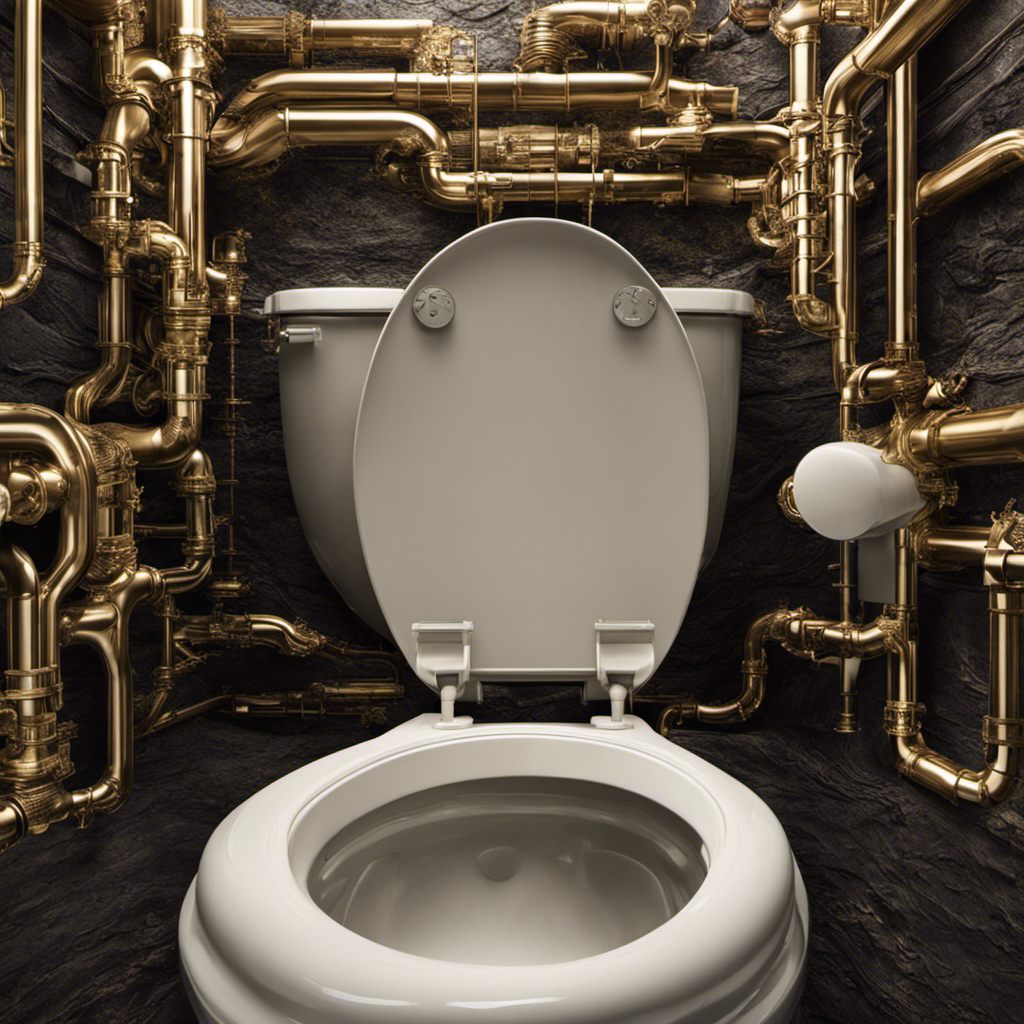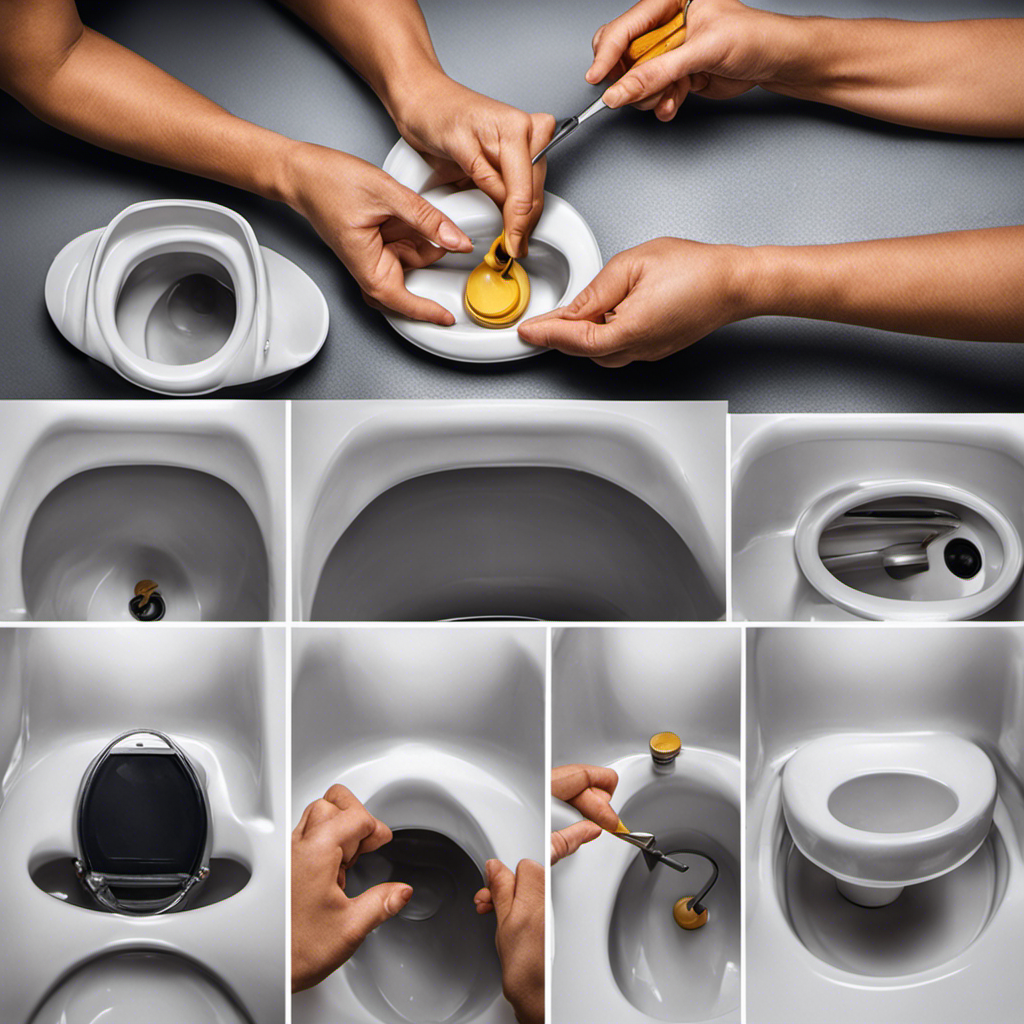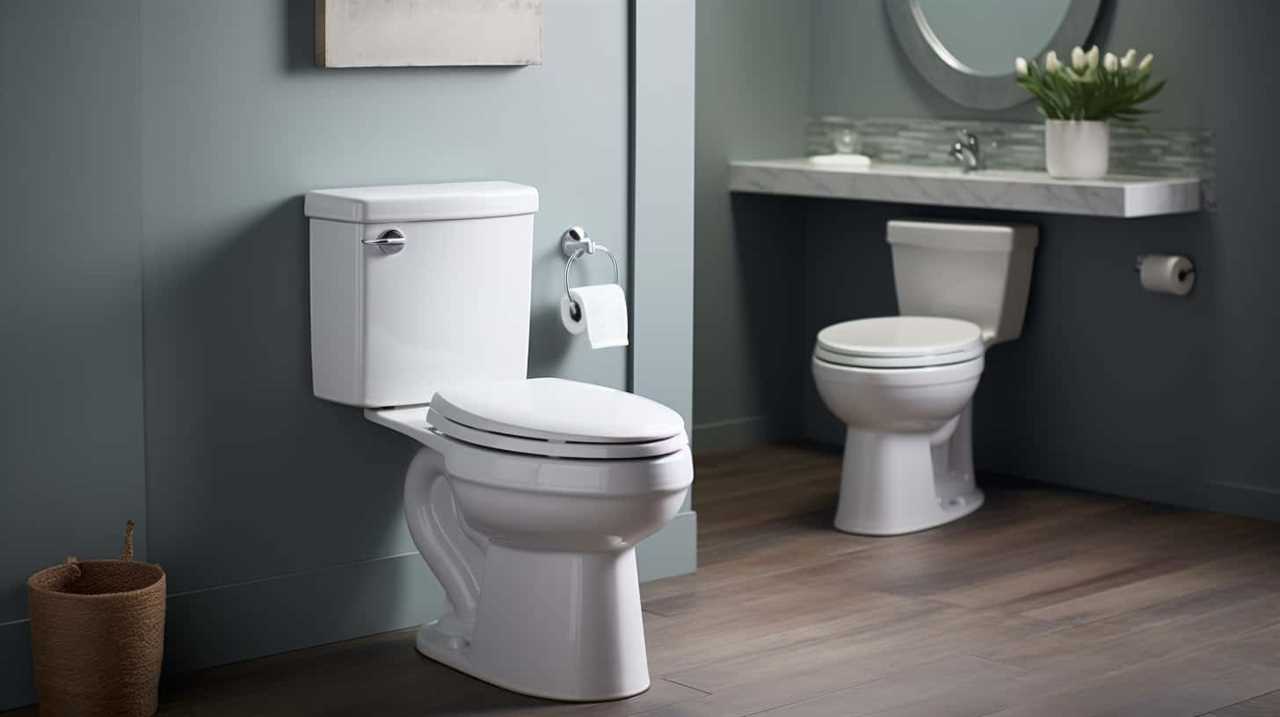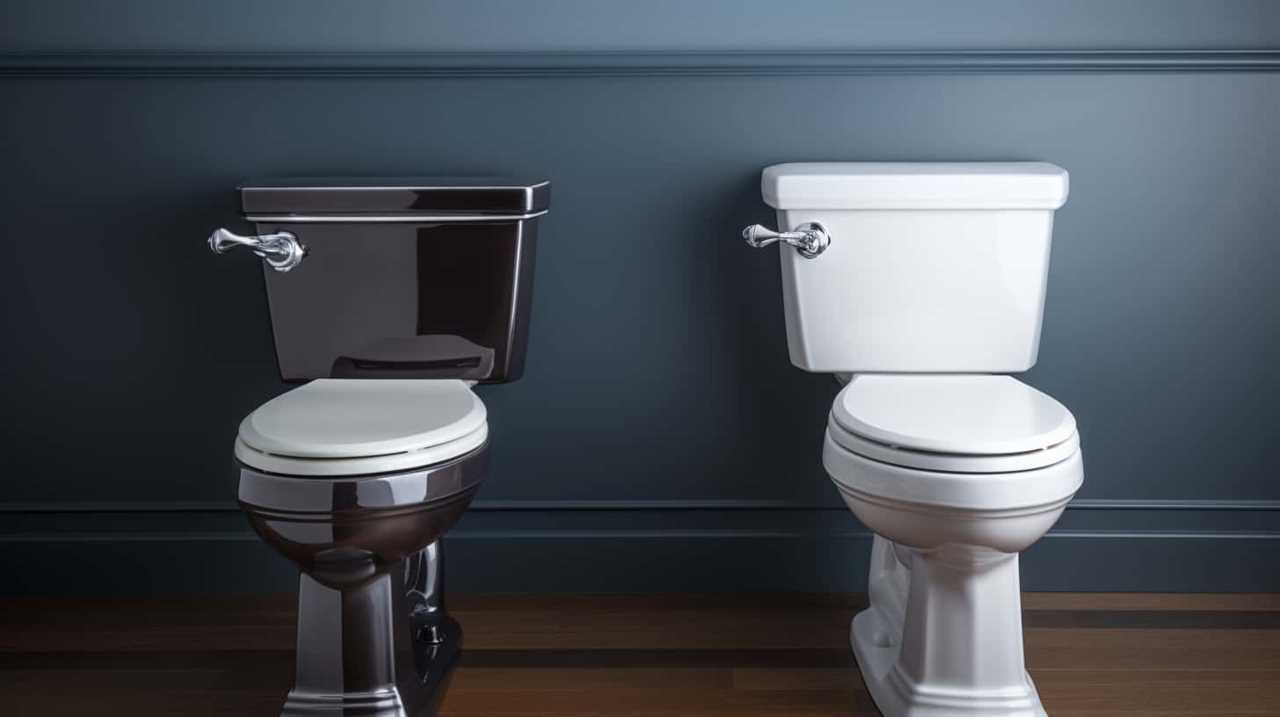As I stand in front of my sluggish toilet, watching the water slowly swirl down the drain, I can’t help but wonder why it flushes so painfully slow. In this article, I will delve into the common causes of this frustrating issue, highlighting the importance of proper water flow in toilets.
We’ll explore how plumbing issues can affect flushing performance and provide you with practical tips to improve your toilet’s flush speed. Additionally, we’ll tackle the role of toilet design in enhancing flushing efficiency.
Get ready to say goodbye to that sluggish flush!
Key Takeaways
- Clogged pipes restrict water flow and reduce water pressure, leading to weak flush.
- Proper water flow is necessary for a strong flush, and clogged pipes hinder water flow.
- Plumbing issues such as clogged pipes and low water pressure significantly impact toilet flushing performance.
- To improve toilet flush speed, check for blockages, ensure sufficient water pressure, and perform regular maintenance and troubleshooting.
Common Causes of Slow Toilet Flush
One of the common causes of a slow toilet flush is a clogged pipe. When the pipe is obstructed, it restricts the flow of water, leading to a weaker flush.
Understanding the toilet flush mechanics can help us diagnose and fix this issue. The flushing process relies on a combination of gravity and water pressure. When the flush lever is pressed, it lifts the flapper, allowing water to rush into the toilet bowl. The force of the water creates a siphoning effect, which pulls waste down the drain.
However, if the pipe is clogged, the water pressure decreases, reducing the flushing power. To resolve this, it is important to identify and remove any blockages in the pipe to restore proper water pressure and ensure a strong flush.
Importance of Proper Water Flow in Toilets
Ensuring that your water flows properly in your toilet is essential for optimal functionality. One of the key factors that affect the water flow in toilets is water pressure. Adequate water pressure is necessary to create a strong and forceful flush. If the water pressure is low, the flush may be weak and inefficient.
Another factor that can hinder the water flow is clogged pipes. When pipes get clogged with debris, mineral buildup, or other obstructions, it restricts the flow of water, leading to slow or incomplete flushing. These issues with water pressure and clogged pipes can significantly impact the performance of your toilet flush.
In the next section, we will explore how plumbing issues affect toilet flushing performance.
How Plumbing Issues Affect Toilet Flushing Performance
When pipes are clogged or water pressure is low, it can significantly impact the performance of your toilet’s flush. Plumbing maintenance is crucial to ensure proper water flow and prevent these issues.
Clogged pipes restrict the flow of water, making it difficult for the toilet to effectively flush waste. This can lead to slow or incomplete flushing, causing inconvenience and potential hygiene problems.
Similarly, low water pressure can hinder the flushing power, resulting in weak or inadequate removal of waste.
Regular plumbing maintenance, including clearing clogged pipes and checking water pressure, is essential to maintain optimal toilet flushing performance. By addressing these issues promptly, you can ensure a reliable and efficient flush, minimizing the chances of experiencing problems with your toilet.
Tips to Improve Toilet Flush Speed
Improving the speed of your toilet’s flush can be achieved by checking for clogged pipes and ensuring adequate water pressure.
Slow toilet flushes can be frustrating, but with proper maintenance and troubleshooting, you can optimize the flushing speed.
First, inspect your pipes for any blockages or debris that may be hindering water flow. Use a plunger or plumbing snake to clear any clogs.
Next, check the water supply to your toilet. Ensure that the water pressure is sufficient, as low pressure can result in a slow flush. If the pressure is low, you may need to adjust the water inlet valve or clean the fill valve filter.
Regular toilet flush maintenance and troubleshooting will help maintain an efficient and speedy flush.
Understanding the Role of Toilet Design in Flushing Efficiency
Understanding the role of toilet design in achieving efficient flushing can help you optimize your bathroom experience. When it comes to toilet design, two key factors that impact flushing efficiency are the shape of the toilet bowl and the water pressure. Here are some important things to consider:
-
Toilet Bowl Shape: The shape of the toilet bowl can significantly affect how effectively it flushes. A well-designed bowl with a smooth, curved shape allows water to flow freely and create a strong siphon action, carrying waste away efficiently.
-
Water Pressure: Sufficient water pressure is crucial for a powerful flush. The higher the water pressure, the better the flushing performance. Low water pressure can result in weak flushes and incomplete waste removal.
-
Trapway Design: The trapway is the channel through which waste exits the toilet. A larger trapway diameter and smooth, glazed surface can help prevent clogs and improve flushing efficiency.
-
Flapper Size: The flapper is responsible for releasing water from the tank into the bowl during a flush. A properly sized flapper ensures an adequate water flow for an effective flush.
-
Flush Valve: The flush valve controls the release of water into the toilet bowl. A larger flush valve can provide a more powerful and efficient flush.
Conclusion
In conclusion, understanding the reasons behind a slow toilet flush is crucial for maintaining optimal flushing efficiency.
From common causes such as clogged pipes or low water pressure, to plumbing issues that can hinder water flow, there are several factors to consider.
By following the tips provided and recognizing the importance of toilet design, you can improve your toilet’s flush speed and prevent future problems.
Don’t let a sluggish flush dampen your bathroom experience – take action now and ensure a swift and powerful flush every time.










